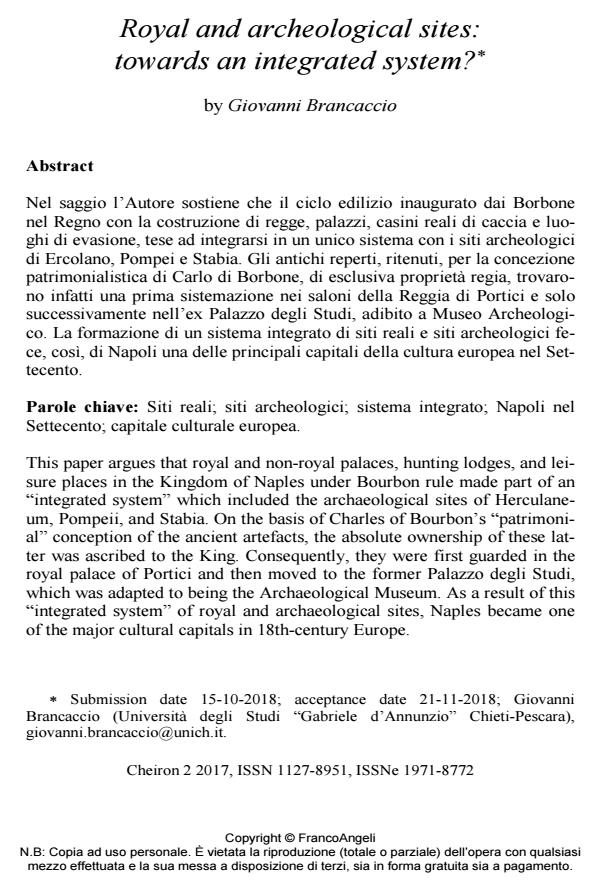Royal and archeological sites: towards an integrated system?
Journal title CHEIRON
Author/s Giovanni Brancaccio
Publishing Year 2019 Issue 2017/2
Language English Pages 13 P. 71-83 File size 104 KB
DOI 10.3280/CHE2017-002003
DOI is like a bar code for intellectual property: to have more infomation
click here
Below, you can see the article first page
If you want to buy this article in PDF format, you can do it, following the instructions to buy download credits

FrancoAngeli is member of Publishers International Linking Association, Inc (PILA), a not-for-profit association which run the CrossRef service enabling links to and from online scholarly content.
This paper argues that royal and non-royal palaces, hunting lodges, and leisure places in the Kingdom of Naples under Bourbon rule made part of an "integrated system" which included the archaeological sites of Herculaneum, Pompeii, and Stabia. On the basis of Charles of Bourbon’s "patrimonial" conception of the ancient artefacts, the absolute ownership of these latter was ascribed to the King. Consequently, they were first guarded in the royal palace of Portici and then moved to the former Palazzo degli Studi, which was adapted to being the Archaeological Museum. As a result of this "integrated system" of royal and archaeological sites, Naples became one of the major cultural capitals in 18th-century Europe.
Keywords: Royal Sites; Archaeological Sites; Integrated System; 18thcentury Naples; European Capital of Culture
Giovanni Brancaccio, Royal and archeological sites: towards an integrated system? in "CHEIRON" 2/2017, pp 71-83, DOI: 10.3280/CHE2017-002003